From sob stories to fights and disagreements, the real picture behind the reality shows – #BigStory – Times of India
With the marketing geniuses at work, it became difficult to separate the real from scripted attempts to boost the show’s TRP. Sob stories, fights, disagreements, romance, drama, the reality shows have it all. Who wouldn’t have heard about the highly moving story of Akash Singh from Bihar who won the latest Hunarbaaz – Desh Ki Shaan with his exceptional dancing skills. Thanks to the reality show, the audience also knows about his struggle from being a watchman to dropping milk at doorsteps, and the different kinds of jobs he did to survive in Mumbai.
Who wouldn’t know about the chemistry between Indian Idol contestants Pawandeep Rajan and Arunita Kanjilal that grabbed more eyeballs than the actual singing on the show? And it’s not long ago when Indian Idol host Aditya Narayan and judge Neha Kakkar were thought to be a couple, thanks to the scripted romantic angle that even supposedly got Udit Narayan to come on the show with shagun for their rishta. Soon after the season ended the two got married to their respective, real love interests. Another case in point is the scripted flirting of Super Dancer host Paritosh Tirpathi with judge Shilpa Shetty that kept hitting the headlines. Then again we saw Bigg Boss cashing in on the televised wedding of Sara Khan and Ali Merchant.
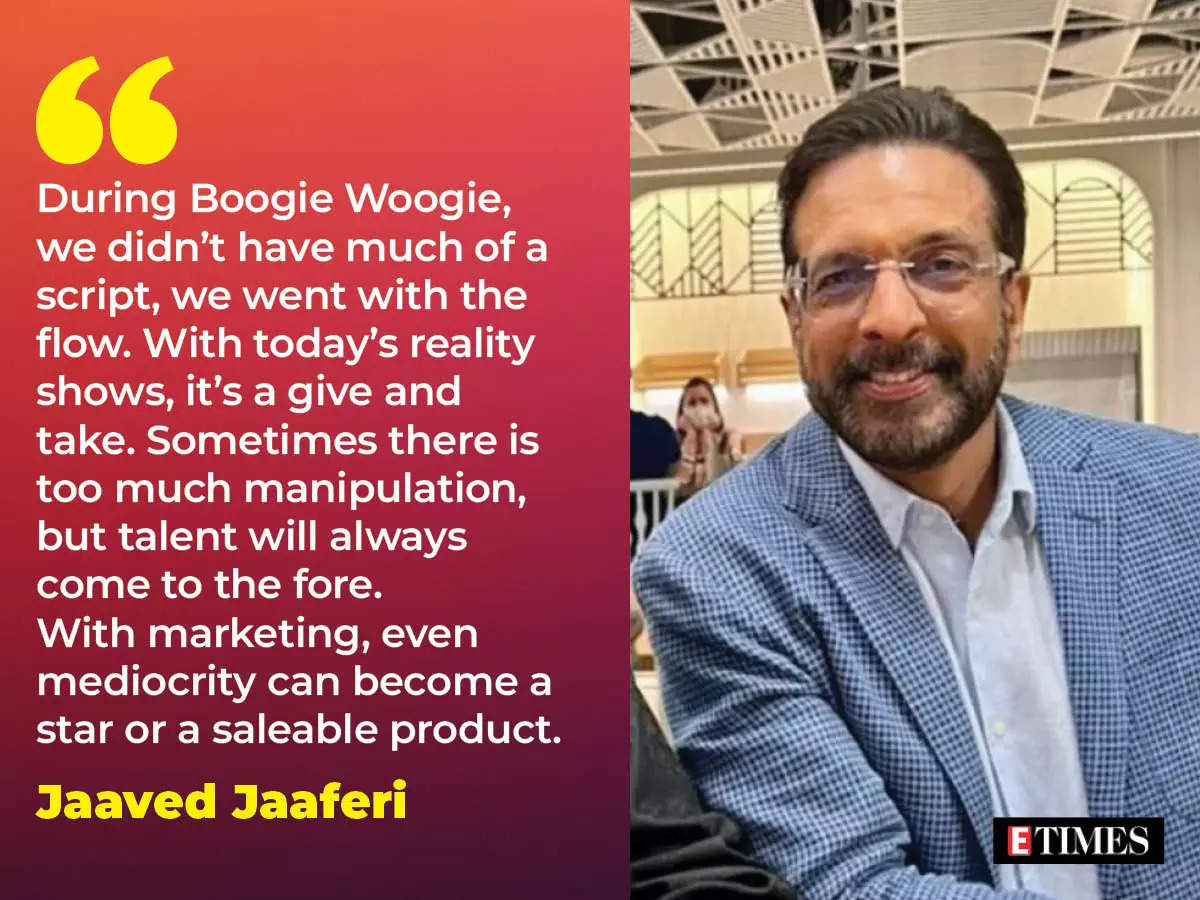
Boogie Woogie was India’s first reality show launched in 1996, and Jaaved Jaaferi maintains no scripts existed for reality shows in those times. Speaking to ETimes, he says, “There are people who sit on the chairs who don’t know the business, what is the pulse of the Indian audience, what they want to see on a reality show. TRPs are numbers that can be manipulated. During Boogie Woogie, we didn’t have much of a script, we went with the flow. The focus was never that a contestant comes from a rich background or poor, or has a good story. It was never planned that way. We were very particular. With today’s reality shows, it’s a give and take. You scratch my back, I scratch yours. It’s a capitalism where the contestants get the exposure and benefit from the platform. Sometimes there is too much manipulation, but talent will always come to the fore. With marketing, even mediocrity can become a star or a saleable product. While the positive side is that talent gets a platform, the downside is everyone starts looking the same.”
In today’s #BigStory, we uncover the reality behind the reality shows and more. Read on.
The stories are real
Each contestant on a reality show comes with a story of their own. However, not every story makes it to the final cut. Either it’s the curation or what is believed to be a careful scripting to show parts that would grab more attention. Singer Shekhar Ravjiani, who has judged several singing reality shows like SaReGaMaPa, The Voice India, Indian Idol, Jo Jeeta Wohi Superstar among others, says, “Having been a judge and mentor for 12 reality shows, I can say with conviction that the emotion that one sees from either participants or judges is as real as it gets. Music has the power to really move people and bring out emotions unexpectedly. Some of the stories and singing that has deeply moved me on shows have come from deep realities that cannot be scripted. There will always be room for skepticism but we must also keep alive that part of us which does believe in real emotions.”
Siddhartha Dey, who has written scripts for reality shows like Jhalak Dikhhla Jaa, Indian Idol and many others and also been a part of Bigg Boss 13 as a contestant, tells us “Sob stories can’t be created. But the existing stories can’t be overlooked either. If we show a real story, several others get inspired to chase their dreams also. One may think it is being cashed upon, but it is also inspiring. In case of Indian Idol 12 contestants Pawandeep Rajan and Arunita Kanjilal, we were asked not to play around their love story too much. But I saw there was a good bonding between them. It was visible in his eyes. If it is real, then how can you ignore it? How do you not show something that is so real?”
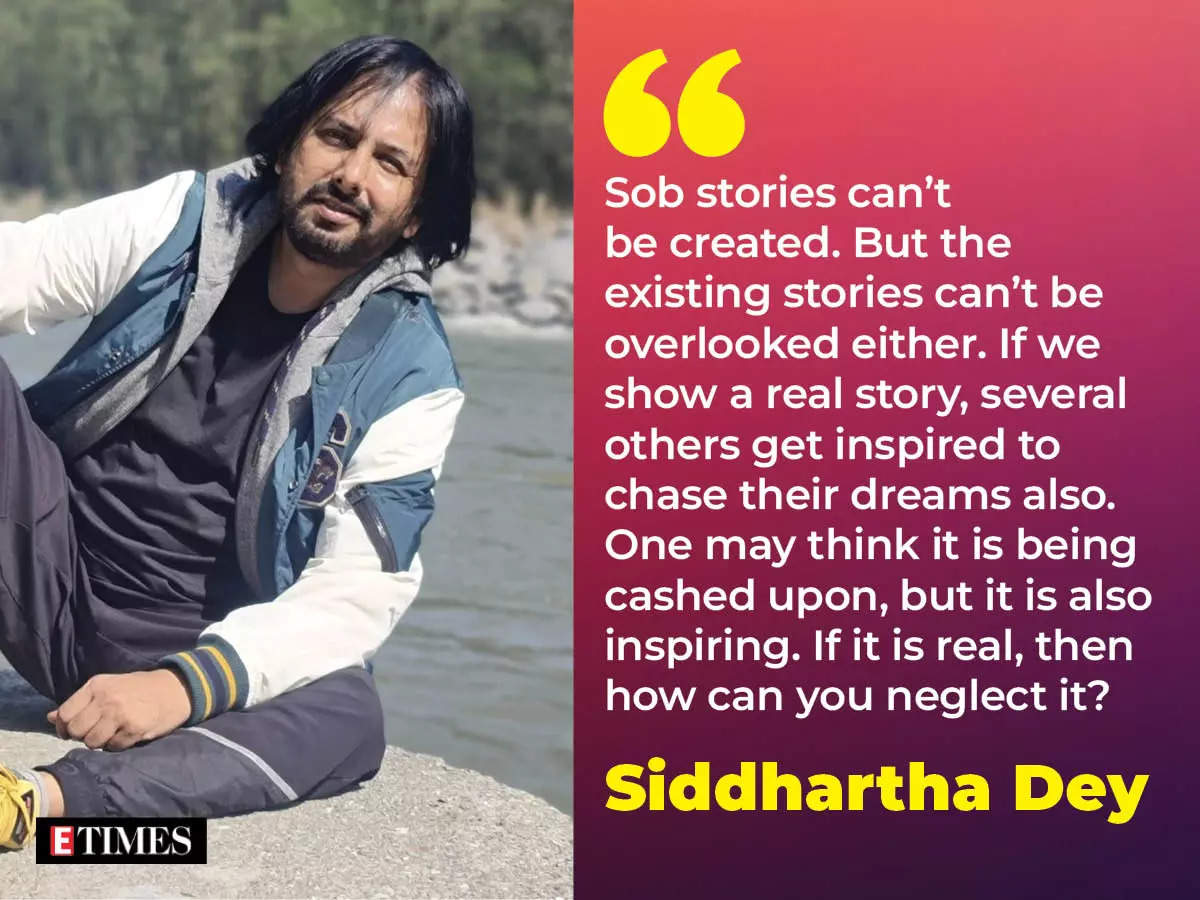
Film director Anurag Basu who judges children’s dance reality show ‘Super Dancer’ with Shilpa Shetty and Geeta Kapur believes reality shows help them to showcase their talent and give the contestants a platform. “As far as fake and emotional drama is concerned, I can tell you that there is no emotional drama that has been planted artificially in the shows in which I was involved. They are real stories; everyone has some sad incidents in their lives and sometimes those sad stories tend to come out. Yes, these things happen, sometimes, channels encash on the stories, but people are very smart and they see through it.”
Actor-comedian Balraj Syal has himself been a part of several reality shows like Comedy Ka Maha Muqabla, Fear Factor: Khatron Ke Khiladi among many others. As an artist he feels the focus should be on talent. “I don’t know, fortunately or unfortunately, it’s a negative impact that we call them ‘sob stories’. These are stories of artistes, some sad, some happy, some stories of their struggle. Unfortunately, sad stories are being highlighted more. Happy stories should also be promoted. Somewhere, I feel the focus is shifted because today, it’s a number game of TRP. As Indians, we are very emotional people and we connect better if we see people’s adversities. That is why it is shown. The creative team wants to know what problems we have faced in our lives because people want to know what kind of difficulties a contestant has faced before becoming successful. But these stories also motivate and uplift people. There is no harm in it but there should be a balance.”
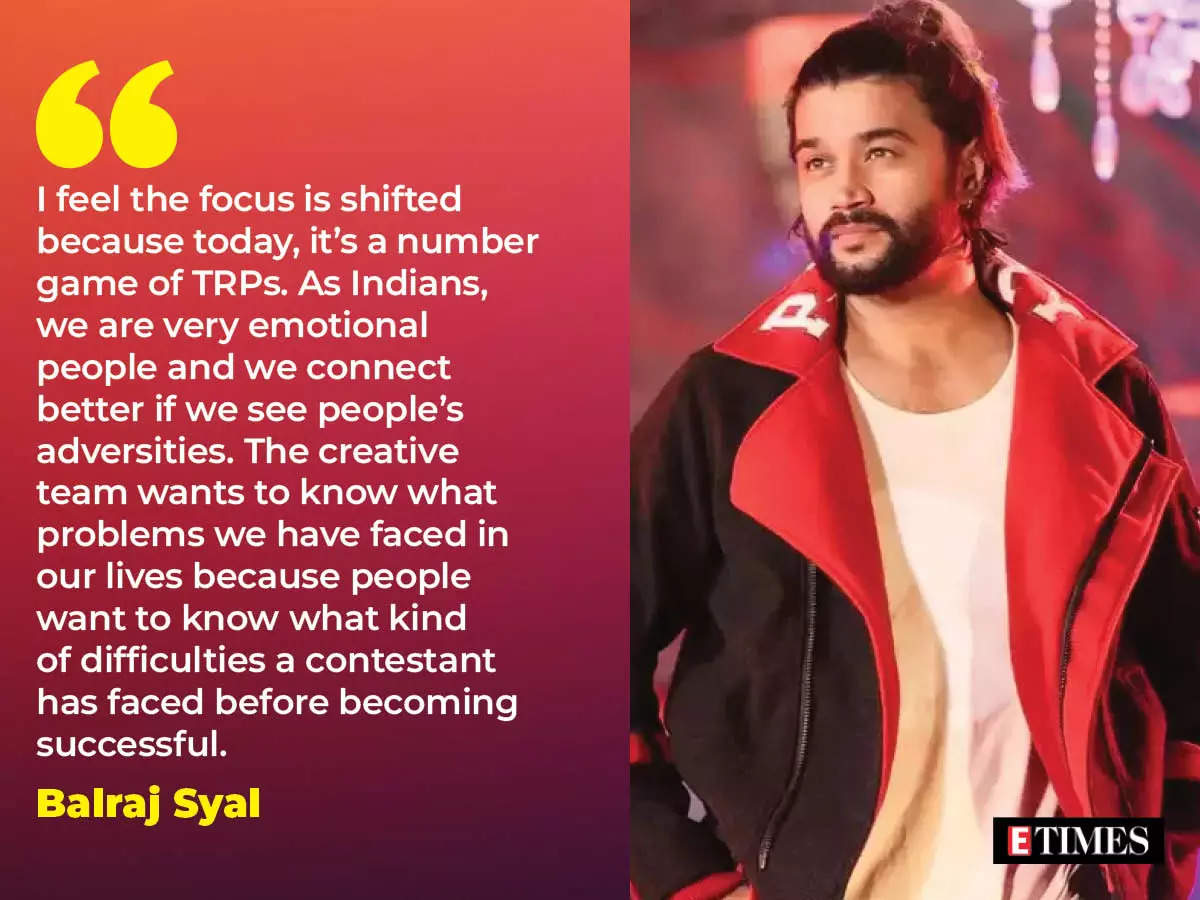
Creative producers at work
While stories may be real, the situations in shows, especially the adventure reality shows can be scripted smartly to add the necessary spice. Shows like Roadies, Splitsvilla, Bigg Boss have a dedicated team of creative producers to get their heads together to add the necessary drama. A source close to a production tells ETimes, “Reality shows are a game of tears. It’s a game of real people where emotions get involved. As creators, we can’t script a fight. What we can do is take two friends and put them in the same task, pit them against each other where they end up fighting. There is deep research involved wherein we find out the trigger points of the contestants. So we can make it happen when the contestants are put together in that zone. It’s like solving a math equation.”
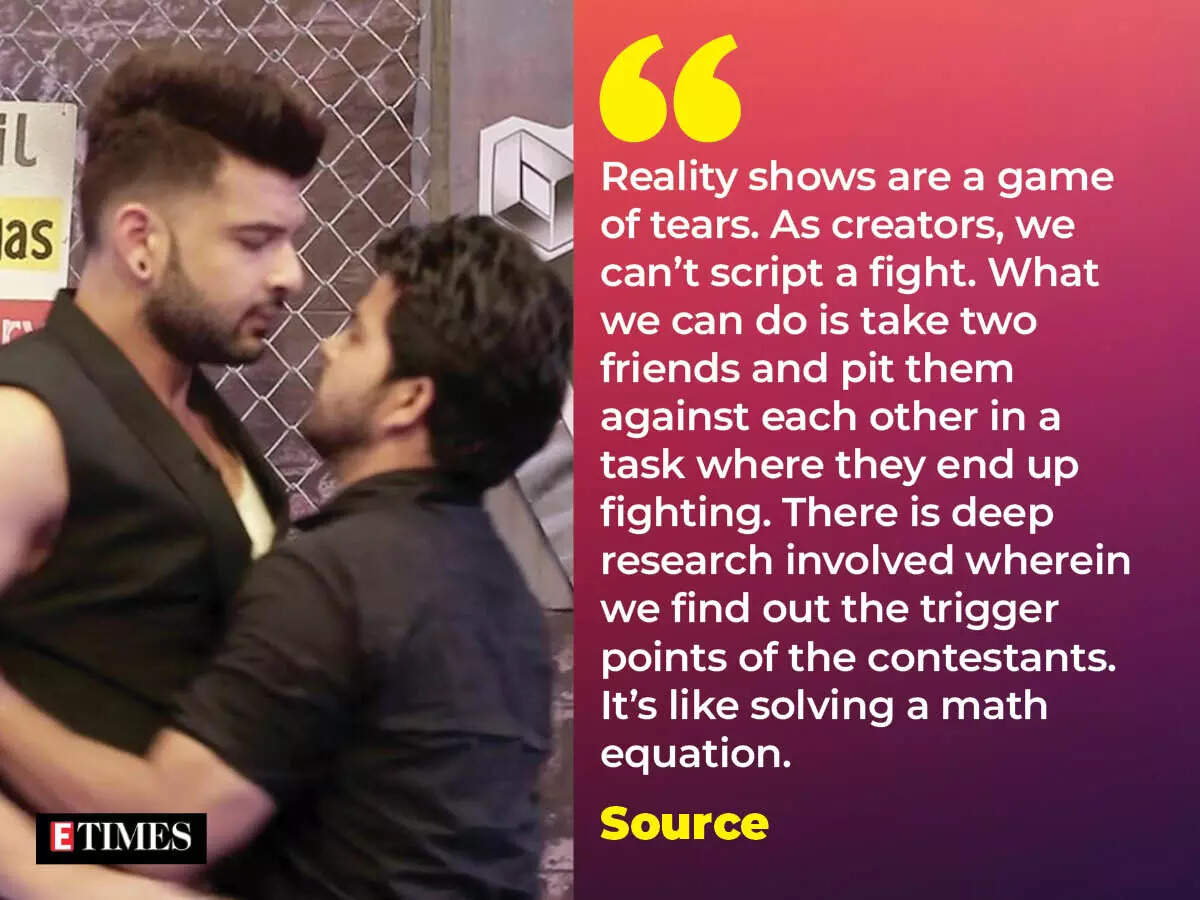
Actress Yuvika Chaudhary who has participated in two reality shows shares, “The makers have their own ways to plan a show. If they see that I am a wrestler and I am aggressive, then they will keep someone opposite who can rile me up.”
Television is an evolving medium just like any other and the audience is evolving too. Reality television by its very nature is meant to open up a world of real stories, real struggles and real talent. “It’s bound to lead to an outpouring of emotion in a country like ours where we as people are deeply emotional. What’s necessary and what’s not, is dictated by viewers and as long as people are engaged and encouraging new talent through their viewership, I think that is what we should celebrate,” says Shekhar Ravjiani.
Winner of the very first season of Indian Idol, Abhijeet Sawant believes that we don’t have too many platforms for singers and musicians, so reality shows are important. “But the sad truth of reality shows is that the industry has not accepted reality shows. The sob stories that are projected for TRPs these days become a problem as the focus gets shifted from music. Musicality pe zyada kaam karna chahiye than glorifying these personal lives, love story angles… People get talking more about that than the actual singing.”
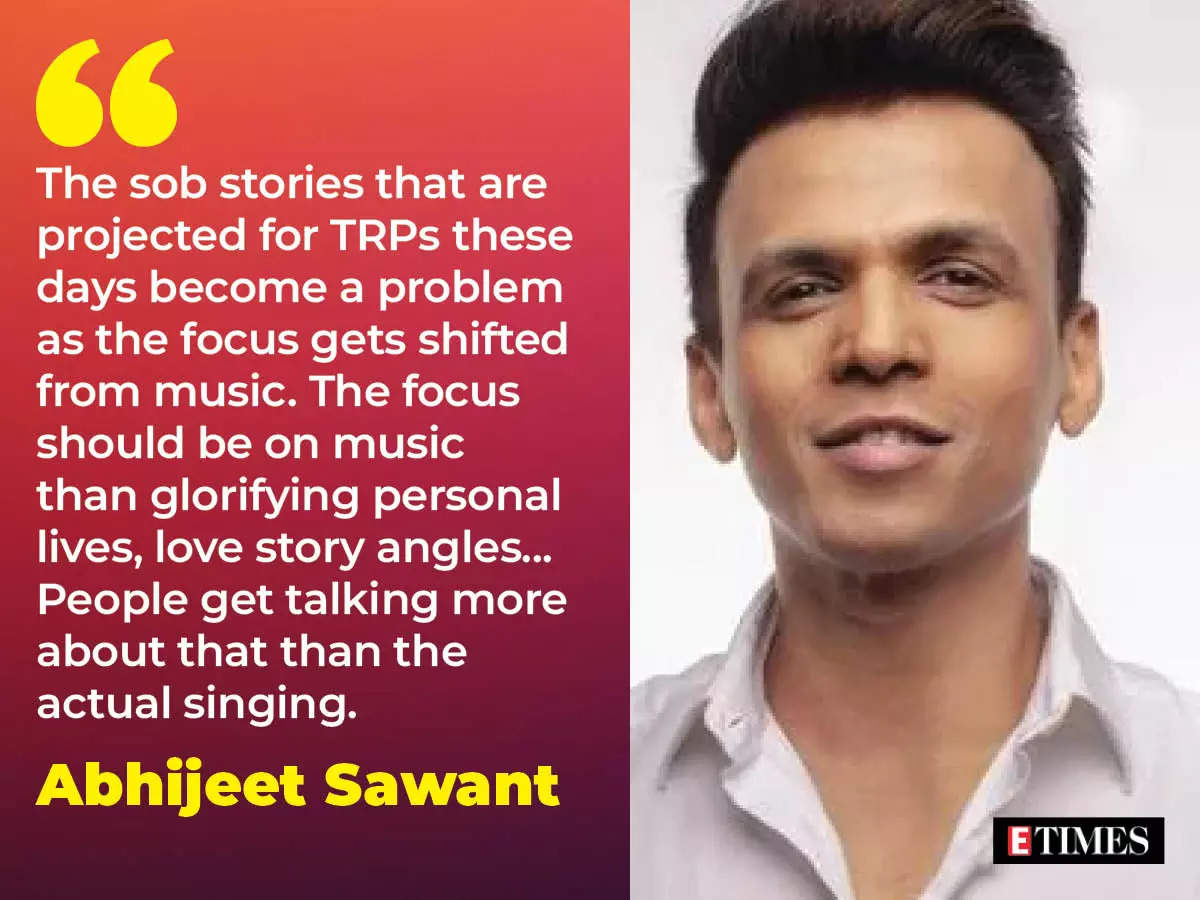
Marketing gimmicks
When big bucks are involved, you do anything and everything to make profits out of it. That’s how the business world churns. But naturally, marketing geniuses work day in and day out to ensure their product reaches the right target audience and gets the best out of every episode. Be it audience engagement on digital platforms, or offline activities, or even cutting out those sensational promos, they do it all.
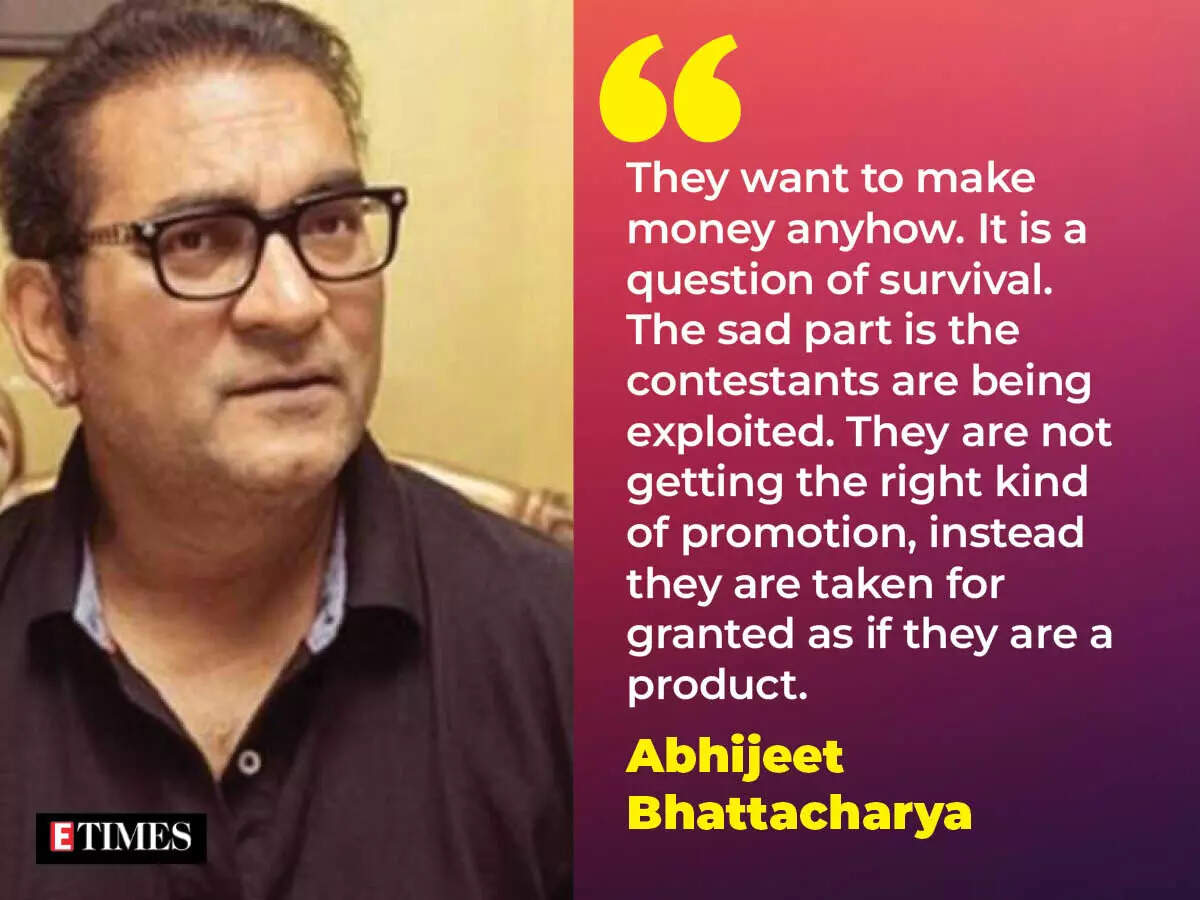
Singer Abhijeet Bhattacharya who has judged a couple of reality shows including Super Singer with Shaan and Kaushika Chakraborty sheds some light, “Even if somebody is not poor, they will make them poor. It is their marketing strategy. Poverty, handicap are things that are exploited for TRP. There is a cost factor involved to run the channel these days, especially when OTT is here. It’s a tough time to survive. They want to make money. It is a question of survival. The sad part is the contestants are being exploited. They are not getting the right kind of promotion, instead they are taken for granted as if they are a product.”
Yuvika believes there is nothing wrong with marketing the show. “They are showing reality, they never tell us to project something fake. If there is something about the contestants’ life, they would want to show it. When it comes to marketing of course they want to sell the show. The promo will be made in an interesting way, otherwise why would people watch the show?” she says.
Choreographer Dharmesh Yelande, who rose to fame after contesting in Dance India Dance, has been a mentor and judge on dance reality shows. “Earlier, I used to think it’s not important to show stories of contestants, but the focus should be on dance only. But (I realised) showing the story is also important because those who don’t win, those who break down midway, those who make excuses for not being able to do it, these stories are an inspiration when they see others making it big despite all odds. So the story builds that connection with the audience. People connect with emotional stories,” he says
The game plan
The door swings both ways, and while the production and marketing teams are at work, the contestants too come armed with strategies of their own. In case of shows like Roadies, Splitsvilla, Bigg Boss, contestants plan their moves, engage in fights, pick their sides to remain in the limelight. “Many a times, the contestants have themselves seen several seasons of the reality shows. So they come with their own game plan to be in the limelight. Subconsciously they also know they have to make noise on the show to survive,” informs a production source.
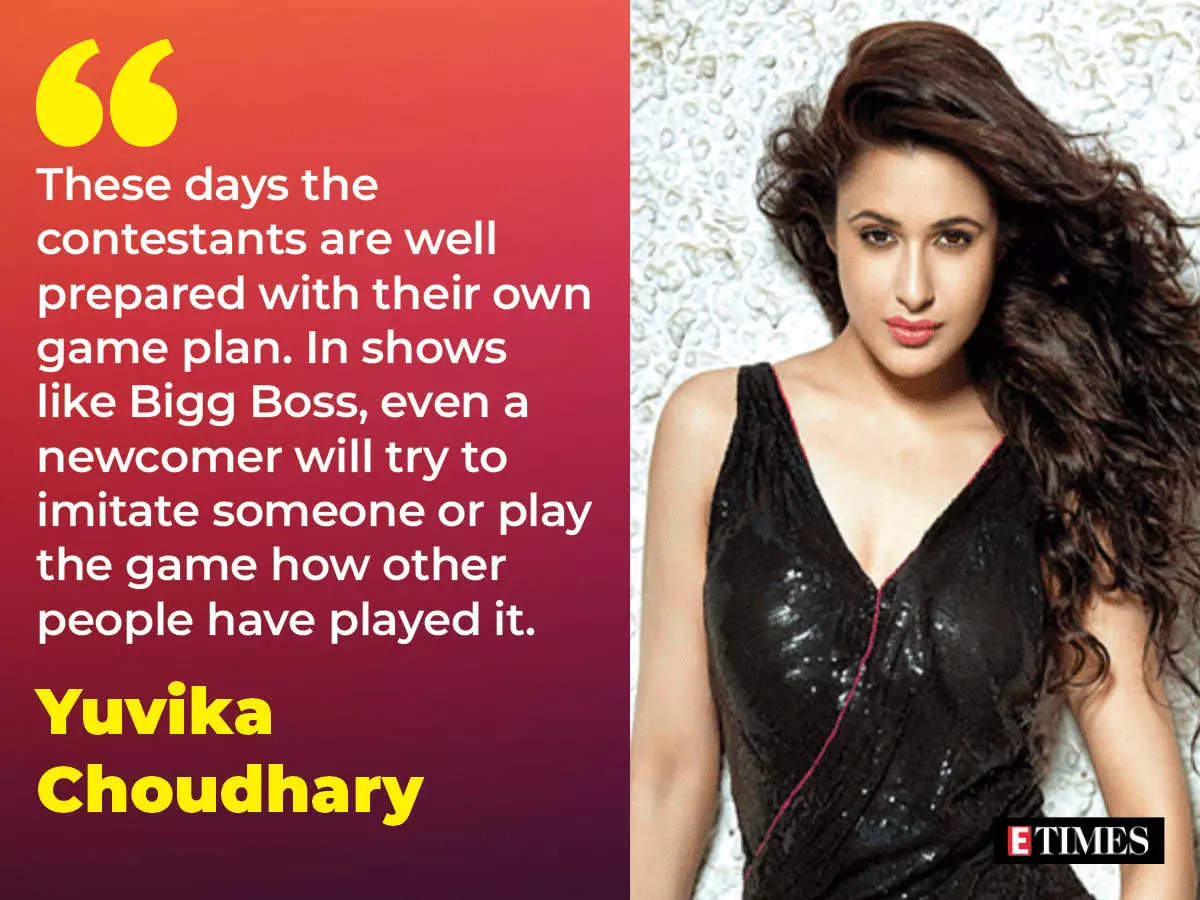
Yuvika agrees, “These days the contestants are well prepared with their own game plan. In shows like Bigg Boss, even a newcomer will try to imitate someone or play the game how other people have played it.“
It’s the talent that shines through
Despite the gimmicks, it’s always the talent that shines through, is the general sentiment. Insiders agree that despite all the inorganic efforts to boost the show, it’s the talent and the personality of the contestant that connects with the audience.
“A show like Bigg Boss is all about masala that’s interesting to people. So we bring together people who are clean with those who are not so clean that generates the masala. On the other hand, shows like Indian Idol and such other talent reality shows would have sob stories that highlight the difficulties from personal lives of the contestants. People know these are scripted stuff, but they still end up watching season after season. Because ultimately, it’s about a personality, their talent. People connect with the contestants because of their talent, not their sob stories. But as makers, we have to put the triggers,” the production source adds.
Dharmesh agrees and says while people should know the stories of struggle of the contestants, there should be a limit. “There should be more focus on performance. Sometimes, the makers ask the judges to go easy and stand in support, but if the performance is not up to the mark, I don’t oblige. When I sit to judge, I don’t conform to anybody else. I have been on the stage, so I know what happens with the contestants. It is important to tell the truth irrespective of how entertaining the person is or how much TRP he/she gets. From a business point of view, the makers will have to use a different strategy to even get contestants on the show. But that also sends a message to the audience that a person can rise from the ashes. Ultimately it is talent that shines.”
Contestants find support
Quite a few participants of reality shows, who may not have necessarily won the competition, are known to have found support because of the exposure they got on the show, either in the form of mentorship, sponsorship or work opportunities.
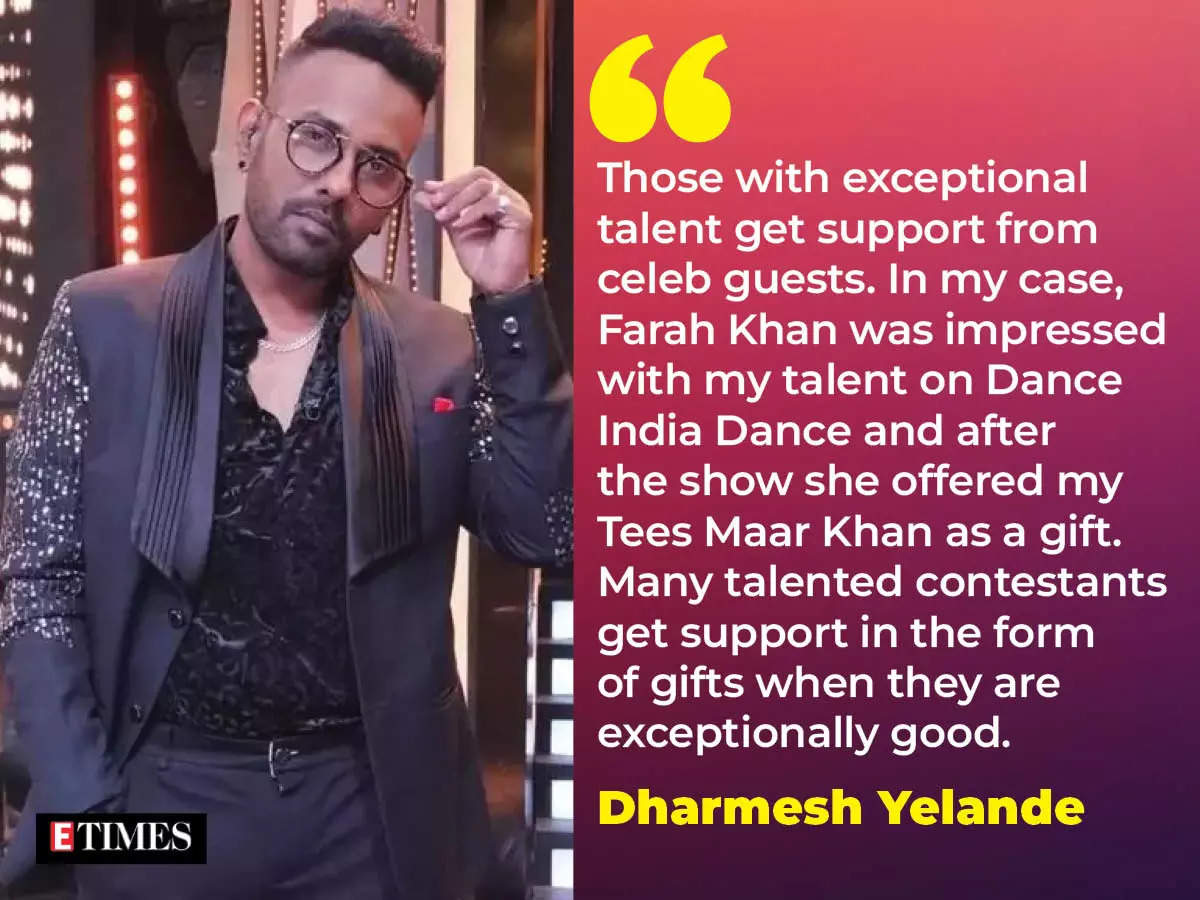
“Those with exceptional talent get support from celeb guests. In my case, Farah Khan was impressed with my talent on Dance India Dance and after the show she offered me Tees Maar Khan as a gift. Many talented contestants get support in the form of gifts when they are exceptionally good,” shares Dharmesh Yelande.
Shekhar Ravjiani adds, “There are countless new talents who have found their voice and future thanks to the love and support of judges and audiences. When I was a judge in Indian Idol, I promised on the show to mentor a little girl, Sugandha Date who I felt had immense potential and I did so for years. When we make commitments on these shows, we definitely mean them and this is not a result of their background stories but is a reflection of their talent and hard work. There is ultimately no success without that.”
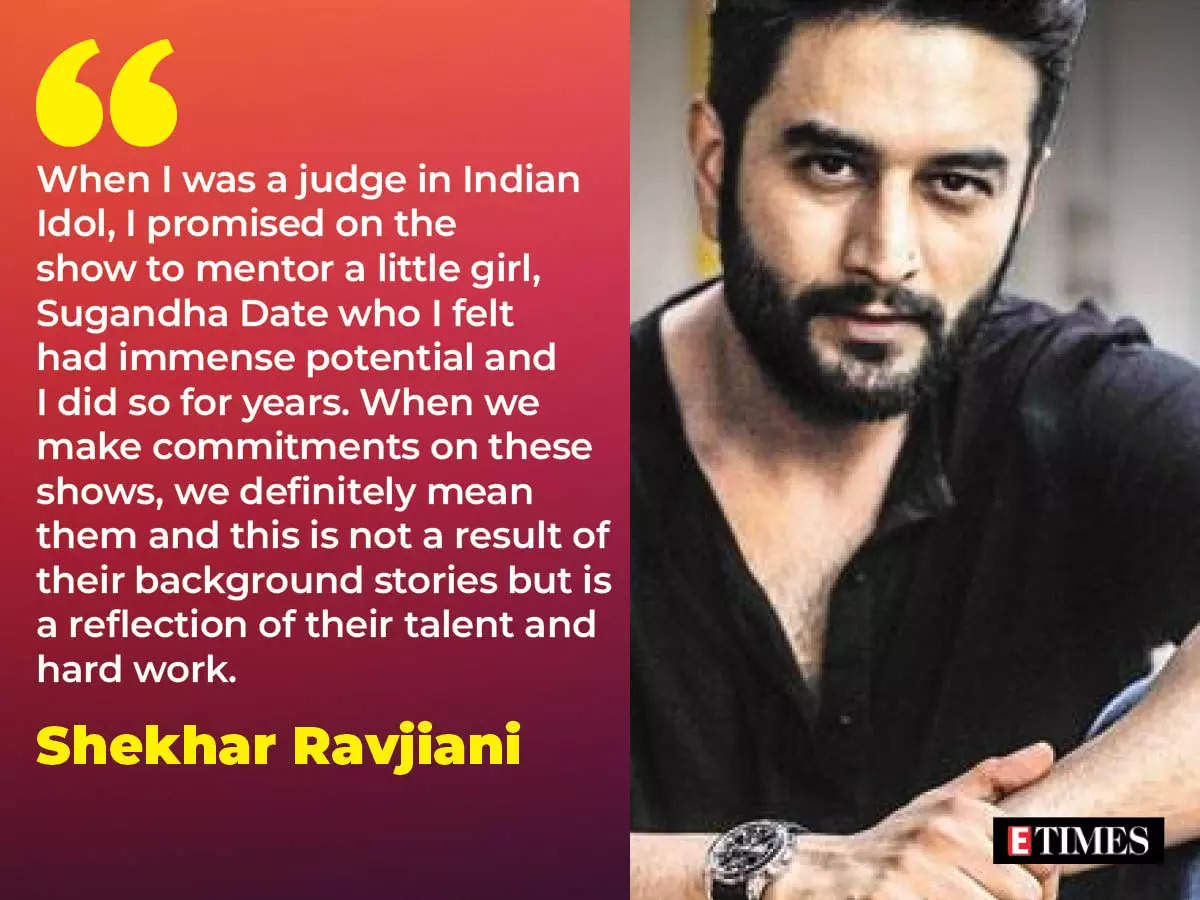
The downside of fame
Fame is a double-edged sword and winner of Kaun Banega Crorepati 5, Sushil Kumar shares his side of the story to support the claim. Recalling his KBC days, he says, “Such things didn’t happen in those days (to boost TRPs). People went to KBC either to change their fortunes by winning money, or because they were big fans of Amitabh Bachchan. I went there because I was staying in a rented place. Of course, I am also a huge fan of Big B. I was preparing for my Civil Services exam then, so things happened. But after that, the media exposure started to irritate me. They were too interested in my personal life. So my behaviour also got influenced in a way. My decisions were impacted considering, ‘Media kya kahegi?’ Studying is something that you do in solace. As I was exposed to the media, I couldn’t really focus on my studies as there was always a distraction. I was constantly written about. I had to give clarification when false stories were published. This went on for 4-5 years.”
Sushil Kumar also believes that too much focus on sob stories is not a healthy practice. “The creative team needs to rethink and alter their ways,” he says about the current trend on reality shows. “I have been a student of psychology, and I know this impacts the psychology of many contestants. The lower middle class people have dreams of their own. These shows are selling dreams. A very small percentage get their dreams realised, the others’ are shattered. They get frustrated and can do anything. It impacts their personality, their perspective changes. And when you say contestants get help, it’s not the case of one person, it’s about millions of lower middle class people who struggle and get frustrated. Sure, their stories should be shown, but also the entire process, their struggle, how they reached that point after years and years of hard work and practice should be highlighted. So that the viewers get a real picture of the struggle and they don’t develop a false narrative that they can also make it without having the real expertise,” he adds.
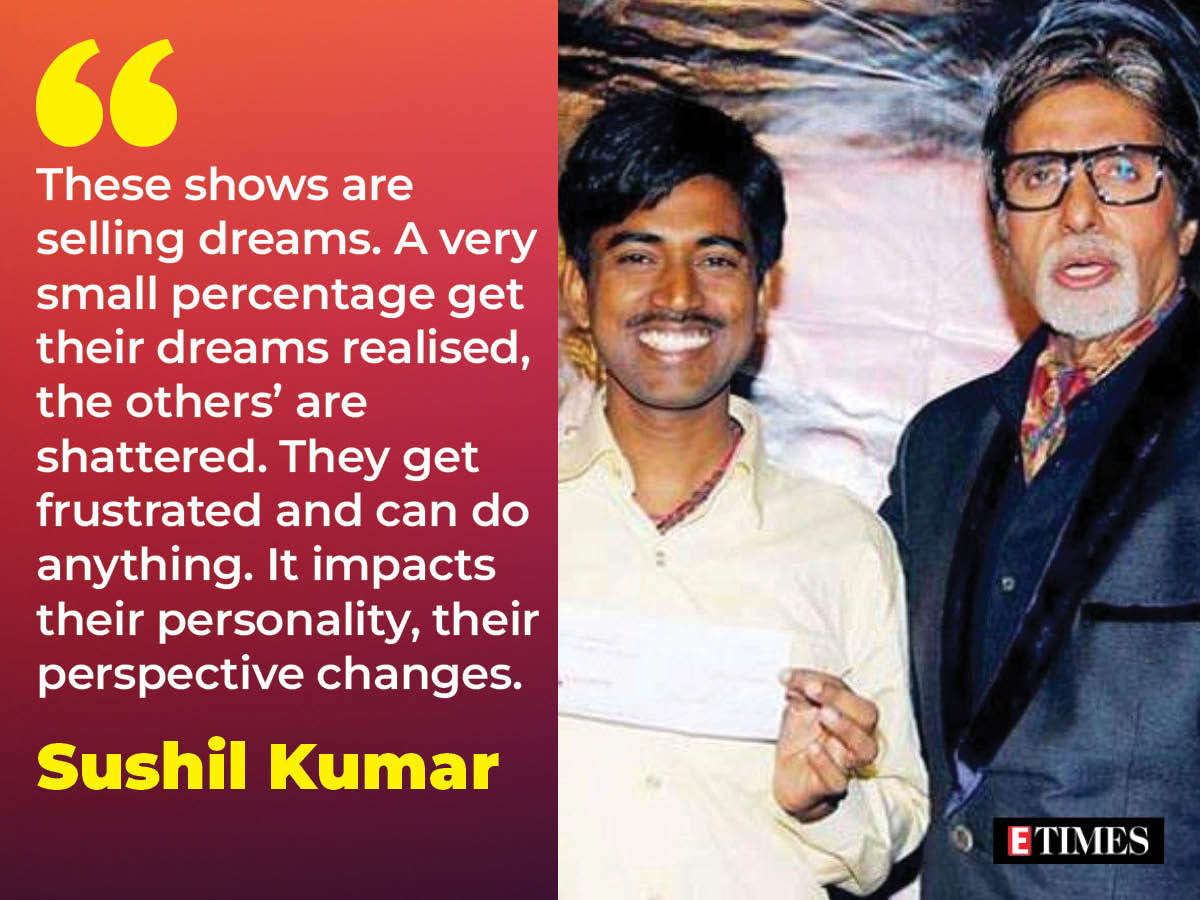
A smart audience
With the increasing number of reality shows and equally increasing scripted gimmicks, the audience has caught on the pulse and is discerning enough to distinguish between real and fake. Shekhar Ravjiani echoes the sentiment as he says, “I think our Indian audiences are extremely discerning and it’s their love for music that is the first and most important reason for watching reality shows. They find joy in the rise and success of those with fewer opportunities in life and I think it’s not a bad thing that we collectively celebrate these stories that through the tears and emotion are ultimately about hope. And that’s beautiful in its own way.”
“I would agree, some people believe that they can get TRPs only with sob stories. But, the audience is also smart and they easily realise when it’s fake. Out of 15 odd contestants, the audience connects with one and makes them win. The makers do not ask anyone to do this, but sometimes when the performance is on a sad song, or about the relationship with a brother, mother, or other bonds, those things reflect in the performance. The contestant also goes deep into emotions and cries, and that reflects in the performance also,” adds Dharmesh.
Whereas Anurag Basu thinks if a show tends to be real, the chances of it becoming successful are more. “The shows which have unnecessary emotional dramas and tend to get artificial with planted fictional stories don’t work, they don’t fetch TRPs. Now channels have also started realising this. Yes, I accept that this used to happen, in fact a lot, but I don’t think it helps gaining TRP anymore because the audiences see through it,” he says.
On the other hand, Sushil Kumar has a contrasting view of the situation. Hailing from a small town in Bihar, he says, “Bahot seedhe-saade log hain gaanv mein. When they see someone cry, people cry along. They start to have dreams of their own and it takes them in a different direction to chase those dreams.”
For all the latest entertainment News Click Here

